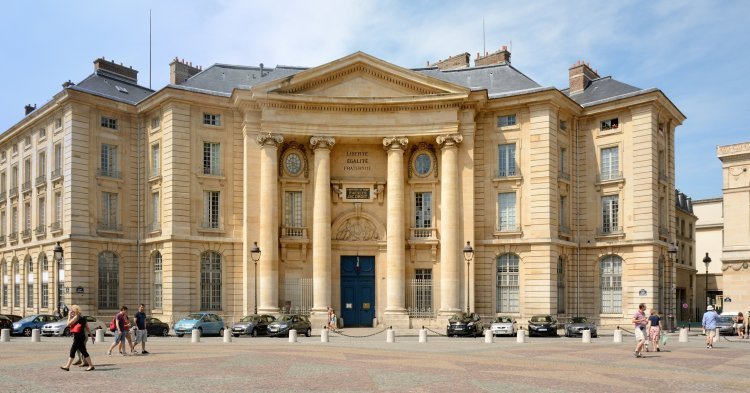Transmission of knowledge at university is fast becoming a commodity like any other. It has a quantifiable price and students sometimes pay dearly for it, especially in the English-speaking world. In Europe, the free vs. fee-paying debate is divisive. What are the issues that surround each side?
In France, a raise in university tuition fees for non-EU students will come into effect at the start of the 2020 academic year. When the measure was announced by the government, numerous student protests took place across the country. Students’ dream of having a university education at the lowest price is not only current but is also worldwide: in South Africa (September 2016) as well as in Chile (April 2018) young people have been mobilising, dreaming of university being accessible to everyone. According to Dictionnaire Larousse’s definition, university is “all members of public education at varying levels that depend on the Ministry of Education.” It is, therefore, a public service that cannot be subject to the logic of the private sector in making it fee-paying with the end goal of making a profit.
Globally, students must pay for their higher education, often dearly, and it is only becoming more expensive. From Santiago to London to Johannesburg, the situation is the same: economic and competitive strategies are forcing the way we finance university to be rethought. So, what are these opposing economic and social approaches? Where is university free and public in Europe?
Europe’s challenge in the 2000s: ‘putting university at the heart of European economic development’
World university rankings being dominated by American or, rather, anglophone universities, Europe has proposed a strategy to find their place in this competitive sphere. Thus, at the beginning of the 2000s, in Lisbon, European heads of government decided to make higher education and research central to the European economic plan. They announced that Europe had to “construct the most competitive and dynamic ‘knowledge economy’ in the world”. Higher education was duly employed to benefit of the European economy. But which economy? And for which degrees?
Competitive university or free university: two models of elite education
For supporters of liberal university, beyond economic rationality, tuition fees allow universities to be more competitive on a global level. They ensure a rise in the world university rankings because of the improved education offered through higher budgets. Consequently, (according to the position of the university in the work rankings) students will find it easier to enter the job market, which, consequently, leads to better salaries.
For defenders of low-cost university, less economically liberal, free university ensures equal access to higher education. World rankings produce increased competitiveness between universities. To some extent, the market that has emerged in the world of academia is to blame for growing social, economic and geographic inequality. It could end up creating a two-tier university system with world-leaders in the rankings on one hand and the more ‘backward’ institutions that struggle to guarantee a bright future for their students on the other. The role of university isn’t just to educate in order to send students into the job market, but also to teach them to have a truly critical approach towards social realities.
The British case: a liberal university system to educate a competitive elite
In 1998, the first university fees were introduced in the UK. All public universities were allowed to charge tuition fees up to £1,000. In 2004, the government allowed universities to increase the fees to up to £3,000 per year, and then in 2012 to £9,000 a year.
In the 1990s, revenue to finance universities deteriorated. This situation triggered a debate about whether students should carry the financial burden of their education, rather than the state. According to the French report Étudiants, l’avenir à crédit, in the 2000’s, liberal political theorists in England claimed that students would greatly benefit from their university education when they entered the job market.
They were supposed to have higher salaries than people who had never set foot on a campus. Consequently, students were charged with financing of their own education, and therefore education became a marketplace, ruled by supply and demand. Some northern European countries resisted this commercialisation of knowledge, because they consider education to be a social asset. Others, however, increasingly took inspiration from the anglophone model. In France, prestigious institutions like Paris-Dauphine university chose to introduce tuition fees.
In France, non-EU students won’t pay tuition fees
In France, although it is commonly accepted that university should remain accessible and a be a democratic place to learn, university tuition fees have hit the headlines. Prime minister Edouard Phillipe’s government announced a rise in tuition fees for non-EU students in November 2018. They would be fixed at €2,700 for undergraduate degrees and €3,770 for masters, compared to €170 and €234 respectively for French or European students.
For those who defend free education, university is a place where social inequalities cannot be allowed to manifest. The government’s strategy is gradual: according to the French newspaper Libération “the government hasn’t announced the next stages of rolling-out tuition fees applicable to all students. It would have young people protesting in the streets. Our strategy is much more subtle: it will reform fees in stages, dividing the different groups involved to prevent them from acting collectively.” [1]
In any case, On 11th October 2019 the Constitutional Council put an end to the debates. Following a preliminary ruling it adjudicated that: “the constitution requires the that the model of free education is also applied to public higher education.” [2]
Good news for the less liberal, but nevertheless this poses some questions. In the same decision, the Constitutional Council confirmed that tuition fees must remain low. Now all that there remains to do is define what ‘low’ means!


Follow the comments: |
|
